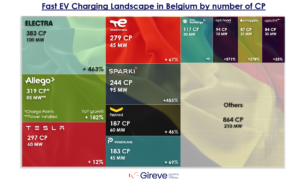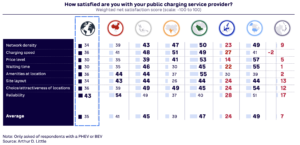Over the past three years, the number of slow and fast charging points across the EU has seen an unprecedented increase. Since late 2020, slow charging stations have more than tripled, surpassing half a million points, while fast charging facilities have grown fourfold, now exceeding 80,000.
This expansion is in line with the European Commission’s Green Deal initiative, which sets a milestone of 1 million chargers by 2025 and a target of 3 million by 2030. These targets are not just aspirational but grounded in the robust growth trajectory observed since 2020, potentially reaching the 2030 milestone three years early, by 2027.
France and Germany lead the charge among the EU’s largest economies, with France hosting nearly 120,000 charging points and Germany boasting the largest fast-charging network in Europe. Remarkably, countries like Bulgaria have already nearly met their 2030 targets due to slower EV uptake, which ensures ample charging availability relative to the number of EVs.
The Alternative Fuel Infrastructure Regulation (AFIR), ratified in late 2023 and effective from April 13, 2024, underpins this infrastructure rollout. AFIR mandates significant infrastructural benchmarks, such as the installation of fast-charging stations every 60 kilometers on major roads by 2030 and a fleet-based target correlating the number of chargers to registered EVs.
Despite these advances, some nations like Malta, Cyprus, and Ireland lag behind, underscoring the uneven progress that persists across the continent. In contrast, 12 EU member states might already meet their 2025 targets based on current infrastructure, highlighting the disparities in national approaches to EV support.
The report by Transport & Environment (T&E) underscores the need for nuanced implementation of AFIR to avoid potential bottlenecks. It recommends that member states adopt forward-looking strategies that account for both light and heavy-duty EV demands, ensuring comprehensive network coverage that precludes future grid challenges.
Key strategies include decentralising the charging network to align with regional EV densities and ensuring that all new chargers meet high standards of reliability and interoperability. Moreover, simplifying permitting processes and smartly directing public funds could address market failures and accelerate charger installation.
As the EU steers towards a greener future, the coherent rollout of charging infrastructure remains crucial. By effectively implementing AFIR and adapting strategies to local needs, Europe not only aims to enhance EV uptake but also to establish a model for global environmental leadership in sustainable transportation.
Source: Transport & Environment




